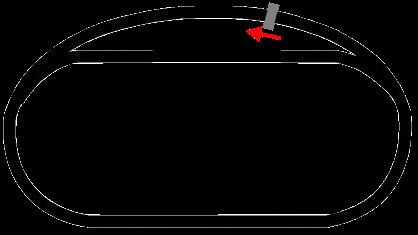Official name Capital City 300 | ||
 | ||
Date September 14, 1964 (1964-September-14) Course Permanent racing facility0.542 mi (0.872 km) Distance 300 laps, 150 mi (241 km) Weather Mild with temperatures approaching 72 °F (22 °C); wind speeds up to 15 miles per hour (24 km/h) | ||
The 1964 Capital City 300 was a NASCAR Grand National Series (now Monster Energy NASCAR Cup Series) event that was held on September 14, 1964, at Virginia State Fairgrounds in Richmond, Virginia. Notable drivers who appeared at this race were Elmo Langley, Wendell Scott, Tiny Lund, Roy Tyner and Richard Petty.
Contents
There were 33 American-born drivers on the grid; no foreigners attempted to qualify for this racing event. Vehicles registered from this race varied in year models from 1962 to 1964. NASCAR team owners that were fortunate enough to afford the 1964 model of stock car vehicles found that their vehicles could exceed 175 miles per hour or 282 kilometres per hour in the right circumstances; bringing in an era of unlimited horsepower. Having this level of speed within the sanctioned NASCAR events brought forth many events in addition to tragedies throughout the year in addition to the remainder of the 1960s.
Background
In 1953, Richmond International Raceway began hosting the Grand National Series with Lee Petty winning that first race in Richmond. The original track was paved in 1968. In 1988, the track was re-designed into its present D-shaped configuration
The name for the raceway complex was "Strawberry Hill" until the Virginia State Fairgrounds site was bought out in 1999 and renamed the "Richmond International Raceway". The Strawberry Hill Races, which are a series of steeplechase horse races were formerly held the third Saturday of April at the Richmond Raceway Complex. In 2001, the races were moved to Colonial Downs in New Kent County, Virginia's first Thoroughbred racetrack.
Summary
During this race, there were lead changes between Billy Wade, Junior Johnson, and Cotton Owens. The transition to purposely-built racers began in the early 1960s and occurred gradually over that decade. Changes made to the sport by the late 1960s brought an end to the "strictly stock" vehicles of the 1950s; most of the cars were trailered to events or hauled in by trucks.
300 laps were completed in more than two hours; with Cotton Owens defeating his employee David Pearson by only a lap. Pearson was 29 years old on the day that the race was held; he was considered to be on the prime of his career recording seven short track victories throughout the summer of 1964. At this time, Pearson was trying to swallow more than he could chew in his NASCAR career so Owens had to teach him a lesson in the pragmatic side of stock car racing. As Owens' last win in his NASCAR career, this event served to remind the spectators who watched this event that not even the biggest NASCAR superstars are totally immune to losing their optimal racing performance during their twilight years.
Ned Jarrett qualified for the pole position for this race with a top speed of 66.89 miles per hour (107.65 km/h). Meanwhile, the average speed of the race would be a mere 61.955 miles per hour (99.707 km/h). Two of the drivers who finished in the "top ten" (Jarrett and Junior Johnson) had problems with their engines during the later laps of the race. Doug Yates, then an independent driver/owner, finished in last-place due to an oil pressure issue on the first lap. Individual track earnings for this event ranged from the winner's share of $2,400 ($18,533.05 when adjusted for inflation) to the last-place finisher's share of $150 ($1,158.32 when adjusted for inflation). The total prize purse was $12,535 ($96,796.56 when adjusted for inflation).
Finishing order
† signifies that the driver is known to be deceased
* Driver failed to finish race
